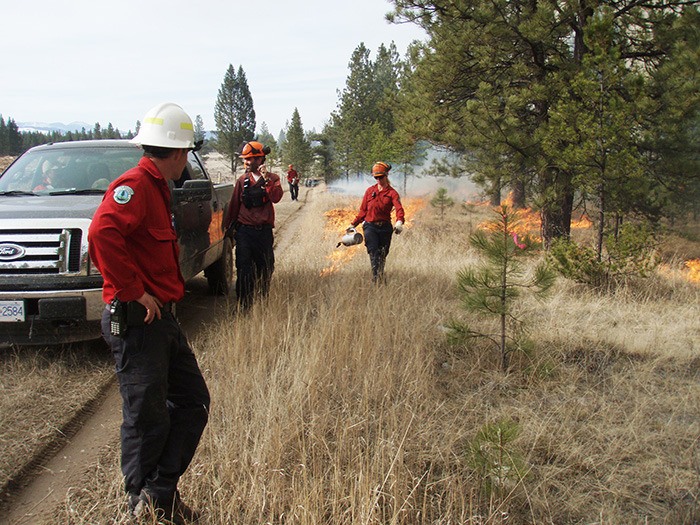As part of their ongoing effort to restore the natural grasslands and open forests of the Rocky Mountain Trench, the Rocky Mountain Trench Ecosystem Restoration Program (ER Program), in partnership with the BC Wildfire Management Branch and other organizations will be holding a prescribed burn for the Canal Flats area later this month, weather and ground conditions permitting.
“Timing is really important,” said Dan Murphy, Coordinator for the Rocky Mountain Trench Natural Resources Society. “The other thing that is critical of course is smoke emissions, so we have to have the proper venting conditions so that we’re not filling the valley up with smoke.”
The burn, which will take place roughly 9 kilometres west of Canal Flats at the base of Fir Mountain, is slated to reach 455 hectares in size while remaining at a low intensity. The idea behind the burn and other prescribed burns that the ER Program hold throughout the year is to thin out the pervasive forests and trees that practically dominate all other vegetation at low elevations.
“The long-term goal is to re-enter fire into the ecosystem,” Murphy said. “Mother Nature used to burn these sites before the European settlers came along and started putting them out. We got really good at putting them out after the second world war, so what’s happened is with the absence of fire in the ecosystem, there’s just been a tremendous ingrowth of trees which are squeezing out the native plants.”
Each year, the ER Program holds a number of prescribed burns in the area they refer to as the Rocky Mountain Trench, stretching from the Village of Radium Hot Springs to essentially the American border. They have enough budget for two to three burns every spring and enough for another one to two burns in the fall, but as Murphy explained, they would love to be able to do more.
“We’d like to be burning a lot more, but it takes funding to get the sites ready to that stage where you can burn,” Murphy explained.
Each site is carefully prepared prior to any prescribed burns taking place, by a combination of logging, slashing and smaller burns. Once the ideal conditions have been met — weather conditions, soil conditions, the proper amount of grass fuel and a reduced tree canopy, among others — personnel are able to attend a site to begin the controlled burn. If they begin a burn too early, they risk causing unintentional damage to the soil and other tree species, and if they burn too late they not only fail to realize all the potential benefits, but also make it more difficult to have a fire in that area in the future.
“Getting all the combination factors sometimes can be a challenge,” Murphy said. “That’s why it sometimes comes down to just a few days in the spring and maybe a couple days in the fall, where you can kind of pull this sort of activity off successfully.”
Funding for the program comes from a variety of sources, ranging from the BC Ministries of Agriculture, Environment, Transportation, and Forests, Lands and Natural Resources to more localized contributors like the Columbia Basin Trust. A recent development in the partnership with the BC Wildfire Management Branch means that Branch personnel will be the ones that actually conduct the prescribed burn, which Murphy called a “huge boost” to the program. Funding for this season’s prescribed burns is provided by the B.C. Provincial governments’ Land Based Investment program. Where possible, the ER Program also tries to reduce costs by selling any saw log or pulp mill components they come across while preparing sites for burns.
“We’re trying to restore and conserve the natural grasslands and open forests that we once had in this valley,” Murphy said. “These grasslands support a lot of different species and a lot of them are endangered, so it’s critical habitat.”
